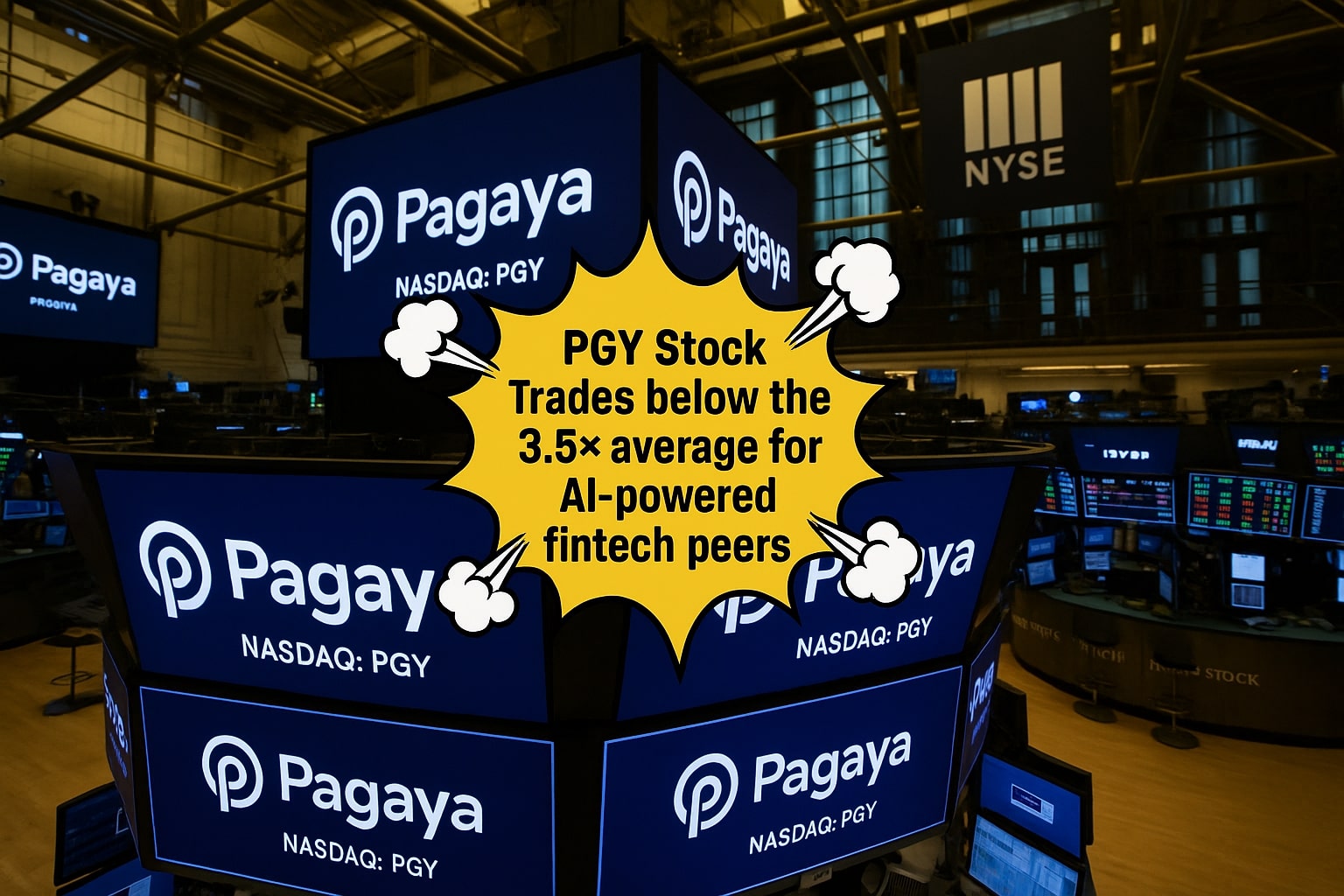
Pagaya Technologies PGY Stock Near $28.50 as AI-Driven Lending Volume Hits $10.4 B
At $28.50, NASDAQ:PGY Rides Q2 Revenue Surge to $326 M and First GAAP Profit of $17 M, Backed by a 4.3 Percent Volume Margin | That's TradingNEWS
Growth Catalysts for NASDAQ:PGY Stock
Pagaya Technologies has leveraged its AI-driven underwriting platform to originate $10.4 billion in network volume through Q2 2025, up from $8.0 billion a year earlier. Each of its 31+ lending partners—including Klarna, SoFi and Exeter—feeds proprietary credit data back into Pagaya’s machine-learning models, accelerating approval speeds while reducing default rates. The firm’s secular tailwind from rising AI adoption in fintech underpins management’s guidance for 20 percent topline growth in 2025, targeting $1.25 billion in revenue by year-end.
Q2 Financial Performance at $326 Million Revenue
Second-quarter top-line results arrived at $326 million, marking a 30.4 percent year-over-year uptick versus consensus forecasts of $299 million. Transaction-based fees accounted for 90 percent of this revenue, with the remainder from software licensing and professional services. Underlying volumes in the personal lending vertical rose 35 percent to $6.7 billion, while newer auto and point-of-sale channels contributed $3.7 billion, up 22 percent from Q2 2024.
Margin Expansion and Profitability at $17 Million GAAP Profit
Pagaya recorded its first GAAP net income in Q2, delivering $17 million of profit on a 4.3 percent fee margin (Fees Realized as a Percentage of Volume, FRLPC). Adjusted EBITDA margin widened to 18.2 percent of revenue, compared to 12.5 percent in Q2 2024, driven by operating-leverage gains as cost of revenue fell to 48 percent of sales. Free cash flow turned positive at $12 million, reflecting disciplined expense control and flattening headcount growth.
Valuation at 2.17× EV/Forward Revenue
The stock trades at an enterprise-value-to-2026 revenue multiple of 2.17×, up from 1.0× six months ago but still below the 3.5× average for AI-powered fintech peers. At a current share price of $28.50, market capitalization stands at $3.4 billion, versus an estimated $1.25 billion in 2025 sales. A DCF baseline using a 9.5 percent discount rate and 25 percent CAGR out to 2030 implies a fair value near $35 per share, signaling 23 percent upside.
Insider Transactions and Ownership
Key executives and directors control roughly 12 percent of outstanding shares. Recent filings show the CEO exercised options on 150,000 shares at $5.00, underscoring confidence in long-term upside. For full details on insider buys and sells, refer to the tradingnews profile here: Insiders
Competitive Landscape and Moat
While AI lending tools proliferate, Pagaya’s defensive advantages stem from its data-network effect: each integration deepens its credit-scoring accuracy. Legacy banks such as JPMorgan and Wells Fargo have in-house models, but none match Pagaya’s real-time enrichment across so many consumer cohorts. Emerging rivals like Upstart (NASDAQ:UPST) trade at 5.0× EV/sales despite narrower partner footprints, suggesting Pagaya remains underappreciated.
Risk Factors
A high beta of 2.4 reflects earnings sensitivity to economic cycles. A downturn in U.S. consumer credit could throttle originations and compress its 4.3 percent fee margin. Heightened competition from well-capitalized incumbents may force price cuts or increased R&D spending. Currency fluctuations and any regulatory clampdown on AI-based credit decisions in Europe or Asia could slow the firm’s planned international rollout.
Strategic Outlook and Price Target
Having validated profitability ahead of projections, Pagaya is well-positioned to scale its network volume from $10.4 billion to $25 billion over the next 3–5 years, with revenue rising to $2.5 billion by 2028. Management’s focus on margin expansion—targeting 20 percent adjusted EBITDA—combined with continued enterprise sales penetration makes a Buy rating at $28.50 compelling. A breach above $32 could trigger a blind-barrel move toward $40, while support at $25 offers a clear risk-management level.
That's TradingNEWS
Read More
-
JEPQ ETF Holds $58.82 as Fund Flows Cool and Nasdaq Valuations Stretch
06.12.2025 · TradingNEWS ArchiveStocks
-
XRP ETFs Cross $1 Billion AUM as XRPI and XRPR Lead Institutional Wave
06.12.2025 · TradingNEWS ArchiveCrypto
-
Natural Gas Price Breakout: NG=F Soars to $5.50 on Cold U.S. Weather & LNG Export Boom
06.12.2025 · TradingNEWS ArchiveCommodities
-
USD/JPY Price Forecast - Dollar to yen Slides to 155.60, BOJ Hike Reprice Global Currency Markets
06.12.2025 · TradingNEWS ArchiveForex


















